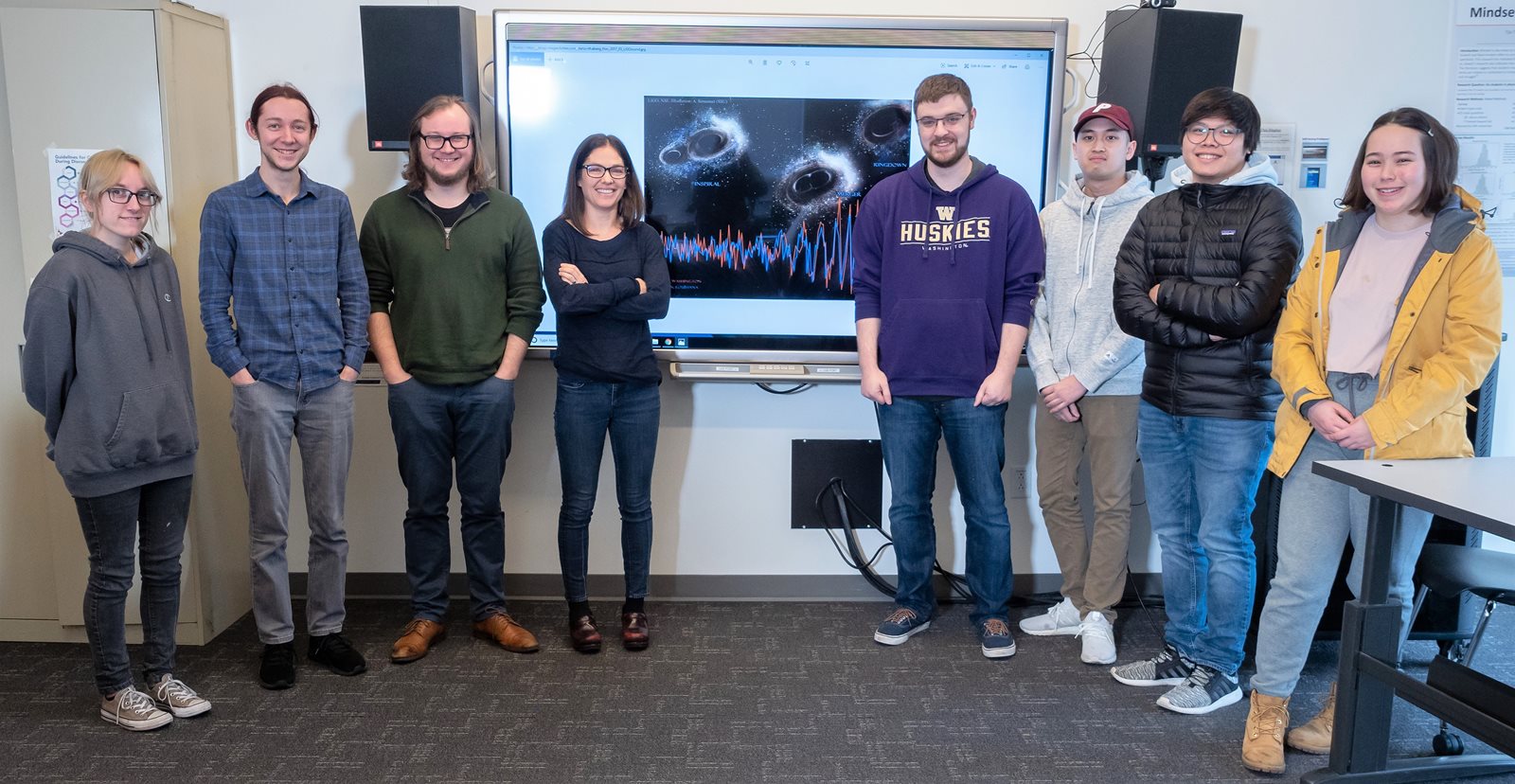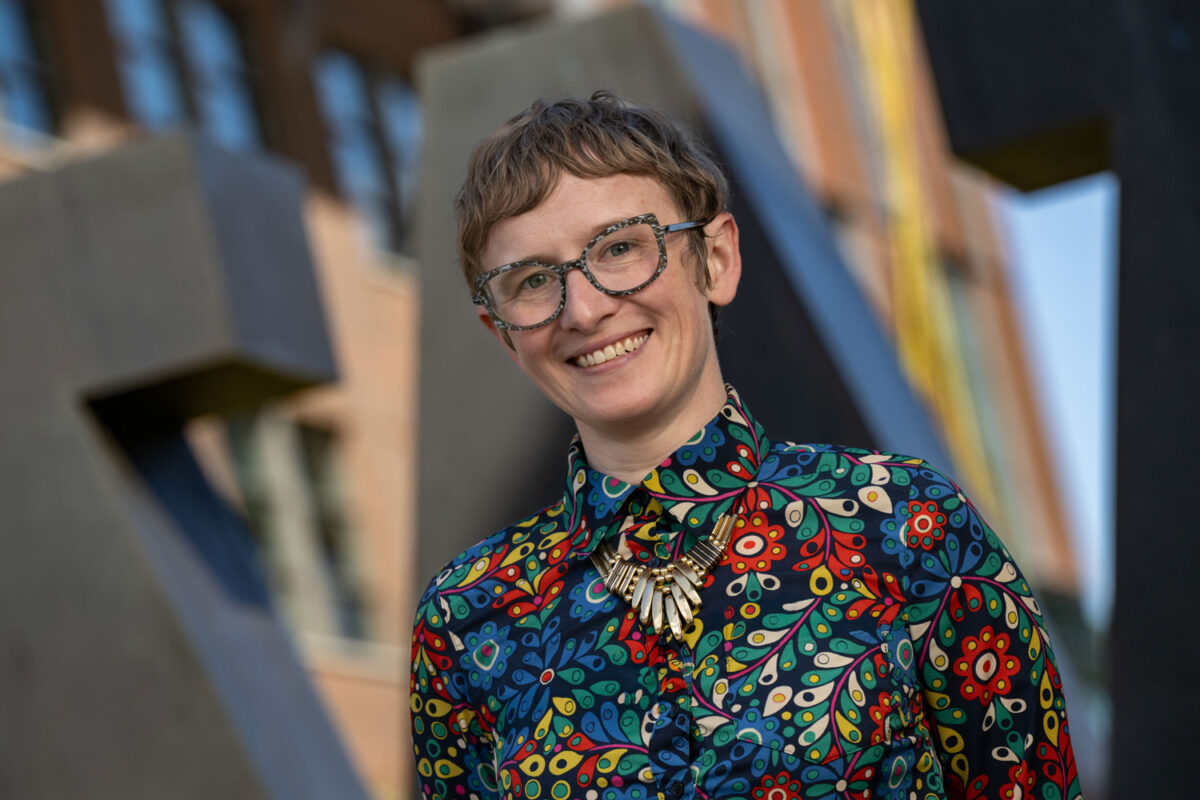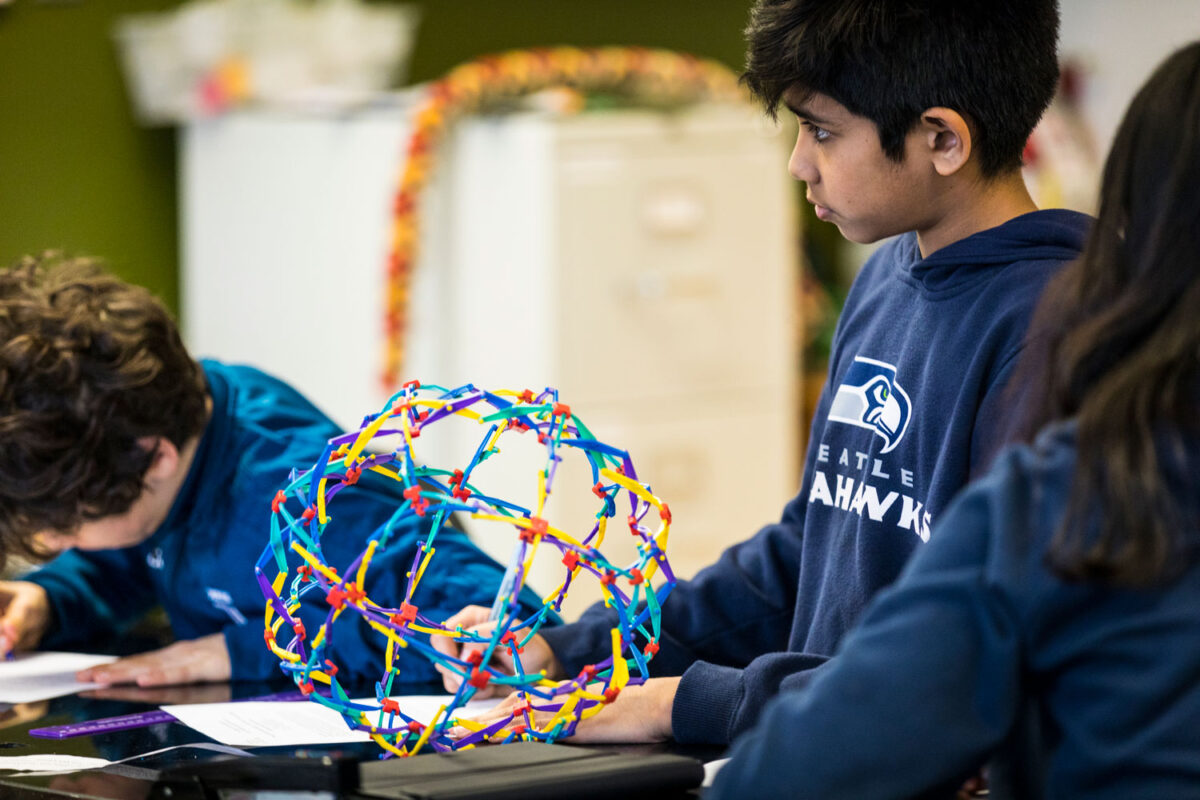
Joey Shapiro Key, an assistant professor in the School of STEM, has received a $400,000 National Science Foundation CAREER award to support her research, which introduces UW Bothell students to a new era of astronomy.
“Everything we know about astronomy through human history has come from light or electromagnetic radiation — radio waves, gamma rays, X-rays,” Key said. “Gravitational waves are a new messenger, a new way to learn about the universe.”
Key leads the UW Bothell Gravitational Wave Astronomy group that includes about a dozen undergraduates and several other faculty members who use the Laser Interferometer Gravitational Wave Observatory, known as LIGO. It is part of LIGO Scientific Collaboration group, which includes thousands of scientists around the globe.
These scientists use LIGO to observe and analyze signals from colliding black holes and neutron stars. The information they gather helps explain the origin and evolution of the universe.
Not your father’s astronomy
LIGO is a pair of advanced technology installations that don’t look anything like domed observatories, aiming telescopes into the night like astral artillery. One part of LIGO is located near Richland in eastern Washington and the other at Livingston, Louisiana. Each installation has two long arms built in an L configuration. Each arm contains a 2.5-mile-long vacuum tube of laser light. Cataclysmic events light years away set off gravitational waves that are revealed by minute changes in the pattern of the laser light waves.
The costliest project in the history of the National Science Foundation, LIGO proved itself in 2015 when it detected a collision of two black holes. That confirmed a prediction made by Albert Einstein about ripples in space and time. LIGO has since then detected more black hole mergers, and in 2017 it also detected the collision of neutron stars, which was confirmed by visible light and other electromagnetic telescopes.
Picking out the ‘stars’
The five-year NSF CAREER award gives non-tenured faculty the opportunity to implement a longer-term research plan. The award is also intended to support faculty who serve as academic role models, especially for students who are typically underrepresented in physics and astronomy.
Key has been teaching at UW Bothell since 2016 and also serves as the adviser to the Physics and Astronomy Club.
For early-career faculty, receiving this NSF award is an honor, said Carolyn Brennan, assistant vice chancellor for research. “They’re picking out the stars,” she said.
Through UW Bothell’s research group, the NSF award also supports the research of Ansel Neunzert, a lecturer in physics, and other senior members of the group who analyze LIGO data and advise students.
Because gravitational wave astronomy is new, there’s a lot of work to be done, and UW Bothell is well positioned to contribute given its location near the LIGO installation, Key said. Students can go to eastern Washington, and scientists there can visit campus.
College culmination
Wynter Broussard didn’t expect to engage in gravitational wave astronomy when she transferred from Edmonds Community College in March of 2018 to UW Bothell.
“I just started dropping by to see what was going on and got involved,” said Broussard, a physics major who graduates in June and plans to study astronomy, physics or astrophysics in graduate school.
Broussard conducted data analysis with Key and, with Key’s recommendation, was accepted into the American Astronomical Society’s Astronomy Ambassadors Program. Broussard now manages the Student Public Outreach Team. SPOT provides free presentations about astronomy to K-12 schools and other audiences, including visitors to Pacific Science Center.
“Research is the culmination of all my studies — applying that and teaching others,” Broussard said.
UW Bothell undergraduates such as Broussard bring a lot to the table, Key said.
“They’re very enthusiastic and actually quite skilled — they’re digital natives — in some of the computational and computer-based work,” she said. “They can really contribute to international collaborations.”
Black holes or tumbleweeds?
Key’s LIGO role has been in helping analyze the gravitational wave data to identify the source. Is it a real gravitational wave or something else triggering the sensitive instrument, even something as incredible as tumbleweeds?
On New Year’s Eve, tumbleweeds blocked a highway near Richland and the same tumbling tumbleweeds caused a problem at the science installation.
“The LIGO detector got trampled by tumbleweeds,” Key said.
Going forward, Key’s UW Bothell research group will work with the North American Nanohertz Observatory for Gravitational Waves, known as NANOGrav, and the NASA and European Space Agency Laser Interferometer Space Antenna mission, known as LISA.



